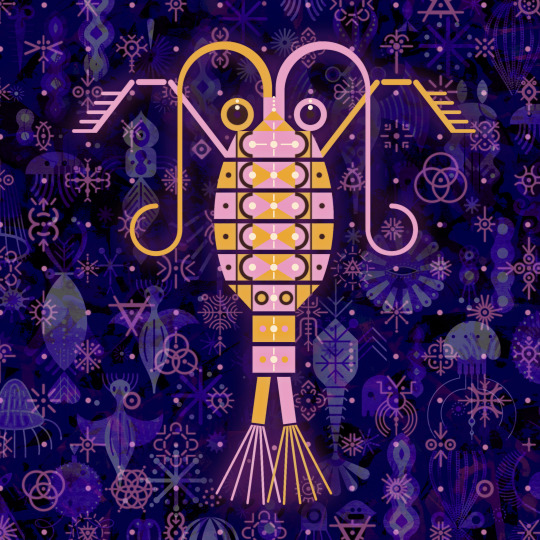#copepod
Text

Splatoon 3's Side Order is super fun and replayable, if a bit short.
I love these little shrimp(?) ladies that sprinkle the hub world in their smart little dresses.
I wish you could interact with them.
Also sorry for being dead. It's just so easy...
266 notes
·
View notes
Text

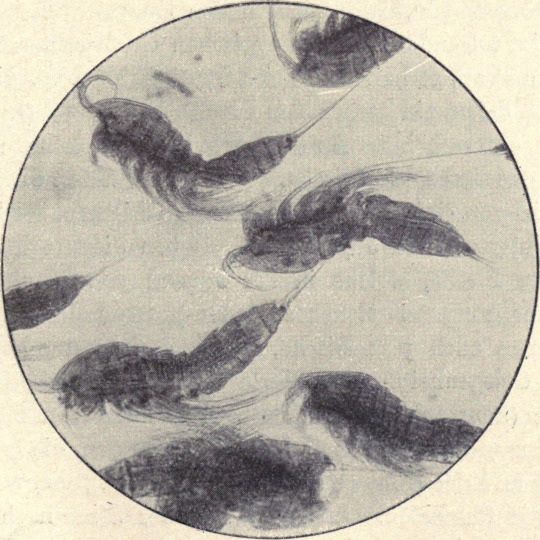
Planktonic copepods
By: Unknown photographer
From: Handbuch der Biologie der Wirbeltiere
1913
296 notes
·
View notes
Text
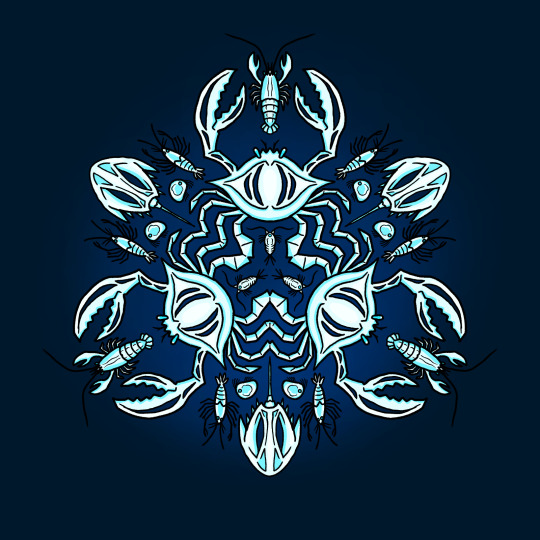
The crustiest snowflake
71 notes
·
View notes
Text

The copepods are one of the first creatures that merged with the smart nano-machines and started to inhabit the cosmos.
The cyclops copepods are in large numbers and can be found in all four quadrants of the known cosmos.
#scifi#biology#poppel#1bit#pixelart#science#poster#plankton#zooplankton#copepod#green#space#cosmos#alien#biopunk#crustacean
456 notes
·
View notes
Text



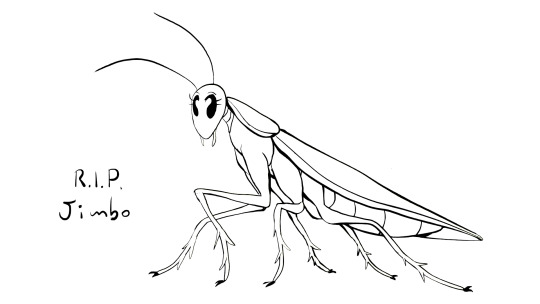

Some commissions I did a while back for people in the $20 tier over on Patreon! A vegetarian Bagheera kiplingi jumping spider and a hummingbird moth for @vlinesnauce, a copepod and a banana roach for @karltface, and a ruby-tailed wasp for Midgebot.
#patreon#2d#midgebot#karltface#vlinesnauce#commission#bagheera kiplingi#jumping spider#copepod#moth#hummingbird moth#spider#roach#cockroach#banana roach
302 notes
·
View notes
Text
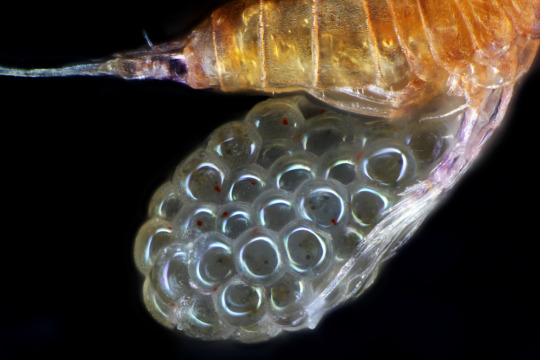
Copepod
#copepod#copepoda#egg sac#wikipedia#wikipedia pictures#nature#animals#marine life#marine biology#marine animals#sea creatures#sea critters#fish lice#arthropods#crustacean#arthropoda#multicrustacea#oceancore#ocean aesthetic#ocean life#ocean animals#ocean#zoology
19 notes
·
View notes
Text

Cyclopses (Cyclops spp.)
Family: Cyclops Family (Cyclopidae)
IUCN Conservation Status: Unassessed
Like the mythical creature from which they take their name, the members of the genus Cyclops (tiny freshwater-dwelling crustaceans growing to be around 0.5-5mm in length) are unusual among animals in that they have only one eye, which is compound and can be either black or red depending on the species, and is used along with their four highly sensitive antennae to locate food (mainly dead plant matter, single-celled organisms and smaller invertebrates such as water fleas) and avoid predators (such as mosquitofishes and barbels.) Found in stagnant or slow-moving water on every continent except Antarctica, Cyclops species swim jerkily forward by beating their ten tiny legs against the water and live for only around 3 months, although when faced with adverse conditions they can survive for prolonged periods in a dormant state by producing a thick coat of mucus to avoid dehydration. Cyclops species breed during the summer (with an increase in water temperature triggering their reproduction,) and following mating females produce a clutch of around 45 eggs which they carry in a pair of pouch-like structures on the underside of their body until they hatch. Under normal circumstances Cyclops pose no threat to humans, but if accidentally ingested through the drinking of the water they inhabit they have the potential to pass numerous species of parasites (particularly nematodes, some species of which such as the solely human-targeting Dracunculus medinensis rely entirely on Cyclops species as intermediate hosts) to animals that swallow them.
——————————————————————————
Image Source: https://www.inaturalist.org/taxa/244267-Cyclops
#Cyclops#cyclops copepod#zoology#biology#carcinology#copepod#copepods#crustacean#crustaceans#arthropod#arthropods#animal#animals#wildlife#African wildlife#Asian wildlife#European wildlife#North American Wildlife#South American wildlife#cosmopolitan wildlife#invertebrate#invertebrates#freshwater invertebrates#microbiology#pond life#pond wildlife#genus Cyclops
19 notes
·
View notes
Text


Cyclops and its nauplius (x50)
A common specie of freshwater copepod, microscopic crustaceans which compose an important part of fresh-water zooplankton.
Their name is due to the fact that they have only one eye (a red point in front of their body, between their two front legs). They eat paramecies and are eaten in large quantities by baby fishes (as other zooplaktons, they reproduce very quickly so the population is stable). The nauplius (picture on the right) is the larva stade of the cyclops.
#zooplankton#cyclops#copepod#nauplius#microscope#biology#microbiology#microscopic life#nature#microorganisms#little animals#freshwater zooplankton#ecology#crustacean#microscopic crustacean#microbiome#ecosystem#one eye#larva
87 notes
·
View notes
Text
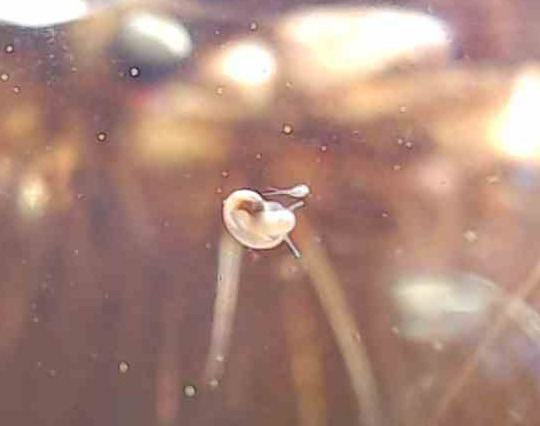
copepod and baby snail
8 notes
·
View notes
Text

they call me karen the way i’m loving plankton
#plankton#freshwater plankton#troops#jellyfish#copepod#rotifer#water flea#lino print#linoleum print#printmaking#printing#original art#trans artist#zooplankton#linocut
29 notes
·
View notes
Photo

Waterfleas carrying eggs
A Striking Short Film Documents the Otherworldly Organisms Living Just Beneath the Water’s Surface
With the aid of multiple microscopes, filmmaker and photographer Jan van IJken (previously) unveils the otherwise imperceptible maneuvers and bodily transformations of plankton. He focuses on a diverse array of underwater organisms, which all fall under the same taxonomy because of their inability to swim against the tides and are crucial to life on Earth, providing half of all oxygen through photosynthesis. Set against black backdrops, the marine drifters appear otherworldly in shape and color, and the filmmaker documents water flea eggs visible through translucent membranes, the spiked fringe of cyanobacteria, and the minuscule movements of various creatures as they wriggle across the screen.
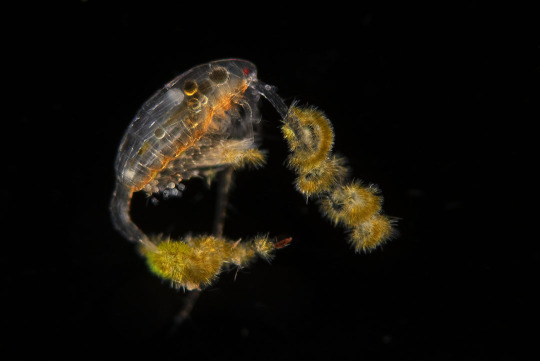
Copepod with diatoms attached

Echinoderm larva

Gloeotrichia – Cyanobacteria
#jan van ijken#photographer#filmmaker#microscopes#short film#organisms#plankton#nature#cyanobacteria#waterfleas#copepod#echinoderm larva#gloeotrichia
31 notes
·
View notes
Text

Copepods
By: Oxford Scientific Films
From: The Complete Encyclopedia of the Animal World
1980
#copepod#crustacean#arthropod#invertebrate#1980#1980s#Oxford Scientific Films#The Complete Encyclopedia of the Animal World (1980)
100 notes
·
View notes
Text

Parasitic Copepod II
2021
4 notes
·
View notes
Text
copeparty in the ephemeral puddle
13 notes
·
View notes
Text
Copepod
As far as I know, the copepod is the only naturally occuring living species that have 1 eye, so there's your fun fact of the day
0 notes
